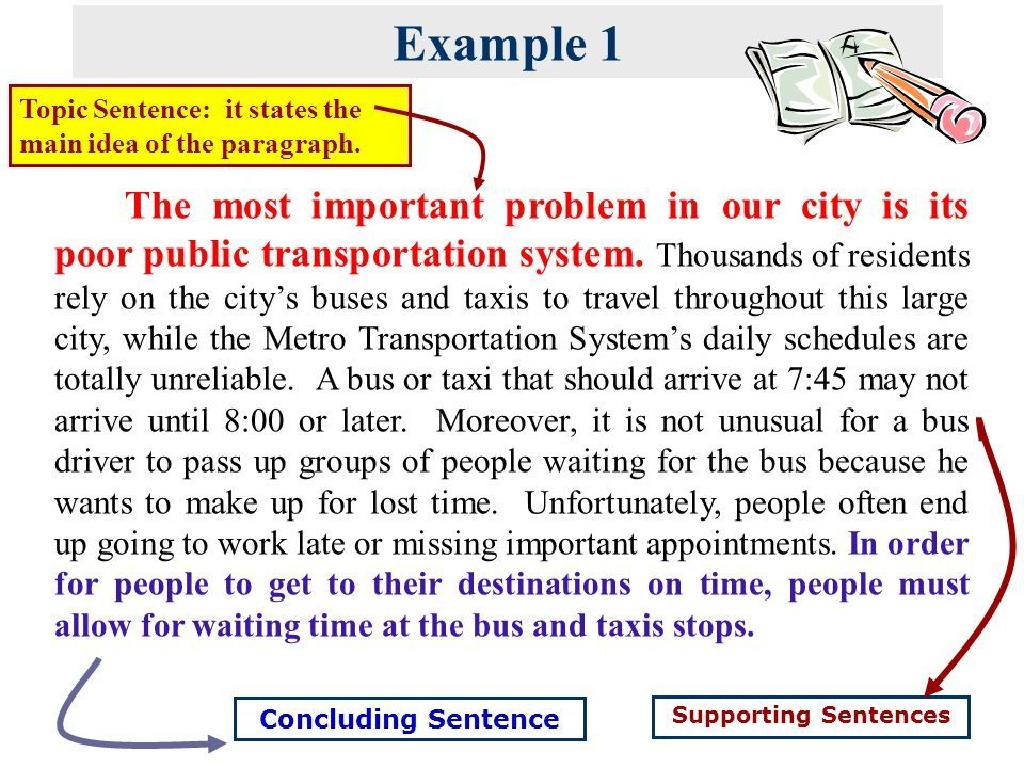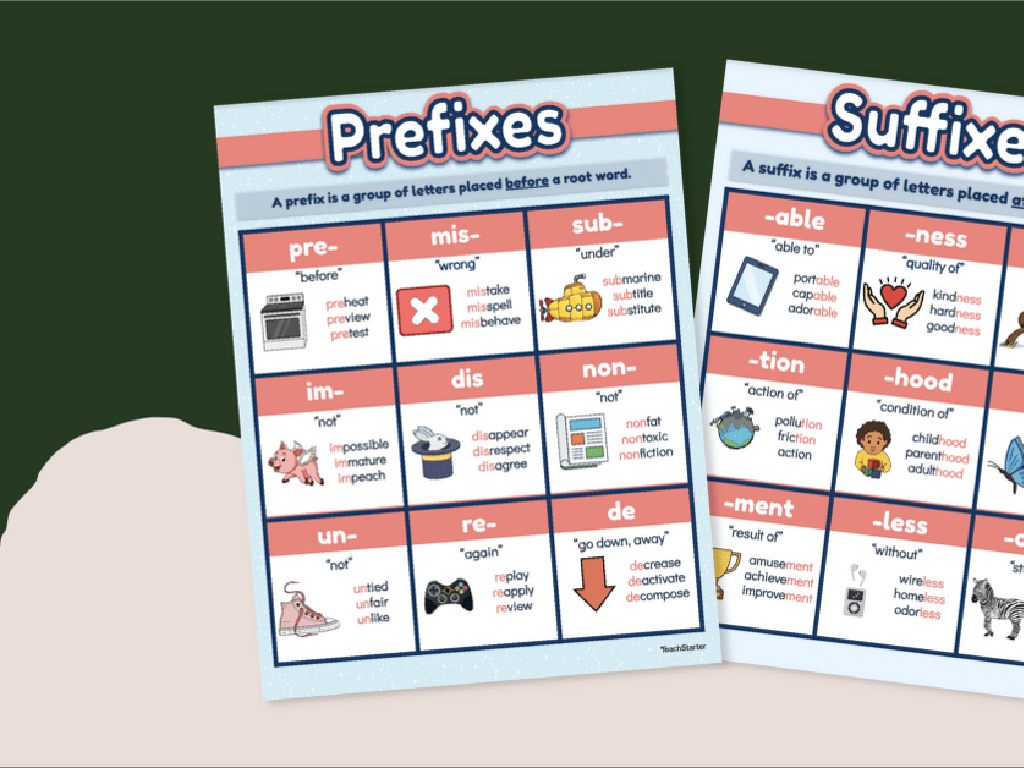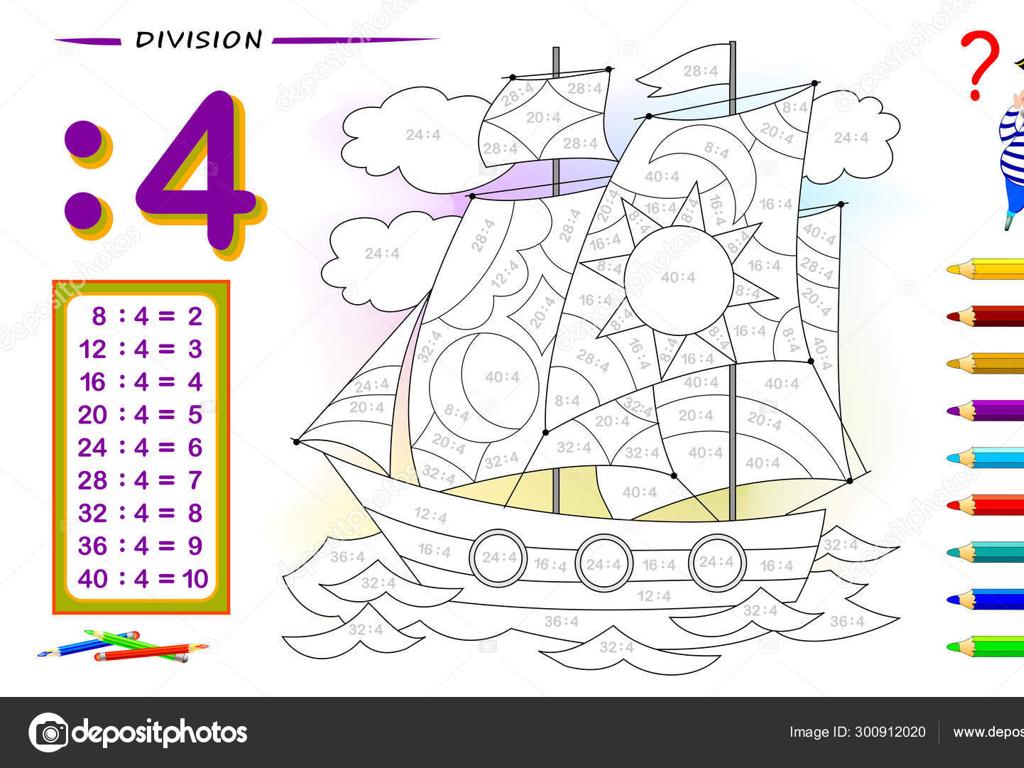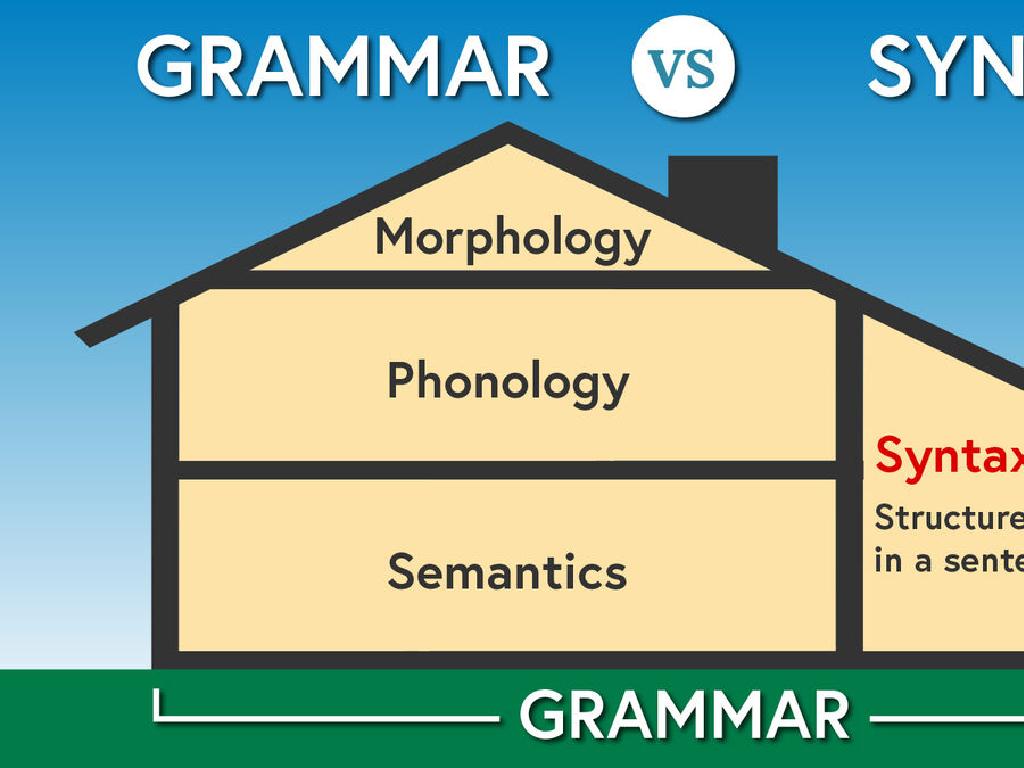Convert Between Percents, Fractions, And Decimals
Subject: Math
Grade: Eighth grade
Topic: Percents
Please LOG IN to download the presentation. Access is available to registered users only.
View More Content
Introduction to Percents
– Understanding percents: The basics
– Percents represent a part out of 100, like 75% means 75 out of 100.
– Relationship with fractions and decimals
– A fraction like 1/2 is 50%, and a decimal 0.50 is also 50%.
– Converting between forms
– To convert, use formulas: % to decimal (divide by 100), decimal to % (multiply by 100).
– Percents in real-life scenarios
– Used in discounts, statistics, finance, and more.
|
This slide introduces students to the concept of percents and their importance in various aspects of daily life. Begin by explaining that ‘percent’ means ‘per hundred’ and is a way to express fractions and decimals in a standardized form. Show how to convert between percents, fractions, and decimals, emphasizing the use of simple multiplication and division. Provide examples such as finding the sale price of an item or calculating a tip at a restaurant to illustrate the practical applications of percents. Encourage students to think of other examples where they encounter percents in their lives.
Understanding Fractions: From Basics to Daily Life
– Define a fraction
– A fraction represents a part of a whole
– Fraction components
– Numerator over denominator, e.g., 1/2
– Fractions in daily life
– Used in cooking, budgeting, time management
– Converting fractions
– Practice converting fractions to decimals and percents
|
Begin with a quick review of what a fraction is, emphasizing its role in representing parts of a whole. Explain the components of a fraction: the numerator (top number) and the denominator (bottom number). Provide relatable examples of fractions in everyday life, such as cutting a pizza into slices, dividing a budget, or allocating time for activities. Encourage students to see fractions around them and understand their practical applications. Finally, introduce the concept of converting fractions to other forms like decimals and percents, which is a crucial skill in various real-world scenarios and mathematical problems. Provide a few examples to practice in class and as homework.
Understanding Decimals: Everyday Applications
– Review: What is a Decimal?
– A decimal represents a part of a whole number, using a decimal point.
– Decimals in daily life
– Money is a common example: $3.75, where .75 represents 75/100 of a dollar.
– Converting decimals to percents
– To convert, multiply the decimal by 100 and add a percent sign (e.g., 0.75 becomes 75%).
– Converting decimals to fractions
– Place the decimal over 1, and multiply both numerator and denominator to remove decimal point (e.g., 0.75 becomes 75/100).
|
Begin with a quick review of decimals, ensuring students recall that decimals are fractions expressed in a different form. Use relatable examples such as money to illustrate decimals in a context familiar to them. Then, guide students through the process of converting decimals to percents by multiplying by 100. This can be linked to understanding discounts and interest rates. Next, demonstrate how to convert decimals to fractions, which is useful for measurements in cooking or science. Provide practice problems for each conversion type and encourage students to explain the process in their own words to solidify their understanding.
Converting Fractions to Decimals
– Divide numerator by denominator
– To convert, divide the top number by the bottom number
– Example: Convert 1/2 to decimal
– 1 divided by 2 equals 0.5
– Decimal form of 1/2 is 0.5
|
This slide introduces the process of converting fractions to decimals, which is a fundamental skill in understanding percents. Start by explaining that the numerator (top number) must be divided by the denominator (bottom number) to find the decimal equivalent. Use 1/2 as a clear example, showing that when 1 is divided by 2, the result is 0.5. Emphasize that this process can be applied to any fraction to convert it into a decimal. Encourage students to practice with different fractions and to use a calculator if necessary to become comfortable with this conversion method.
Converting Decimals to Percents
– Multiply decimal by 100
– To convert, shift decimal point two places to the right
– Example: 0.75 to percent
– 0.75 * 100 = 75%
|
When converting decimals to percents, the key operation is to multiply the decimal number by 100. This effectively shifts the decimal point two places to the right, turning it into a percentage. For example, to convert 0.75 to a percent, you multiply by 100 to get 75%. It’s important for students to understand that this process is the reverse of converting from percent to decimal. Encourage students to practice with various decimals to become comfortable with this conversion. Have them check their understanding by converting the resulting percent back into a decimal.
Converting Percents to Fractions
– Write percent as fraction over 100
– Percent means ‘per 100’, so 50% becomes 50/100
– Simplify the fraction
– Reduce 50/100 to its simplest form, which is 1/2
– Example: Convert 50% to a fraction
– 50% is equivalent to 1/2 when expressed as a fraction
|
When converting percents to fractions, start by writing the percent as a fraction with a denominator of 100, since ‘percent’ means ‘per 100’. Next, simplify the fraction by dividing both the numerator and the denominator by the greatest common factor. For example, to convert 50% to a fraction, write it as 50/100 and then simplify it to 1/2 by dividing both the numerator and the denominator by 50. It’s important to ensure students understand the concept of simplifying fractions and can find the greatest common factor. Practice with more examples in class to reinforce the concept.
Converting Fractions to Percents
– Convert fraction to decimal
– Multiply decimal by 100
– Example: Convert 3/4
– 3/4 as a decimal is 0.75, which is 75% when multiplied by 100
– Practice with different fractions
– Try converting 1/2, 2/3, and 5/8 to percents
|
Begin by explaining the two-step process of converting fractions to percents. First, divide the numerator by the denominator to get a decimal. Then, multiply the decimal by 100 to convert it to a percent. Use 3/4 as an example to demonstrate the process: 3 divided by 4 equals 0.75, and 0.75 times 100 equals 75%. Encourage students to practice this method with different fractions to become comfortable with the conversion process. Provide additional examples like 1/2, which becomes 0.5 and then 50%, or 2/3, which is approximately 0.67 and then roughly 67%, to illustrate the concept further.
Let’s Practice: Converting Percents, Fractions, and Decimals
– Convert 50% to a fraction
– 50% equals 1/2
– Change 1/4 to a percent
– 1/4 is equivalent to 25%
– Turn 0.75 into a percent
– 0.75 is the same as 75%
– Write 20% as a decimal
– 20% can be written as 0.20
|
This slide is dedicated to practicing the conversion between percents, fractions, and decimals. Start by demonstrating each example on the board, then allow students to try similar problems on their own or in small groups. For the first problem, show that dividing the percent by 100 gives the fraction (50/100 = 1/2). For the second, multiply the fraction by 100 to find the percent (1/4 * 100 = 25%). To convert a decimal to a percent, multiply by 100 (0.75 * 100 = 75%). Lastly, converting a percent to a decimal involves dividing by 100 (20/100 = 0.20). Encourage students to check their work by reversing the process to ensure the original number and the converted number are equivalent. Provide additional problems for practice and ensure to clarify any misconceptions.
Class Activity: Grocery Receipt Conversions
– Convert grocery items to fractions
– Change fractions to decimals
– Turn decimals into percents
– Design a conversion poster
– Use creativity to display conversions
|
This interactive class activity involves students working in groups to apply their knowledge of converting between fractions, decimals, and percents using real-life examples from a grocery receipt. Each group will receive a receipt with various items listed with prices. They will first convert these prices into fractions, then change those fractions into decimals, and finally turn those decimals into percents. After completing the conversions, students will create a poster displaying their work in a creative and educational format. This activity will help solidify their understanding of the relationship between these three numerical representations. Possible variations for different groups could include using different receipts, focusing on specific items, or challenging them to find the best deals using their conversions.
Conclusion: Percents, Fractions, and Decimals
– Review of conversion methods
How to convert between percents, fractions, and decimals.
– Importance of mastering conversions
Understanding these concepts is crucial for real-life applications.
– Q&A session for doubts
Ask any questions about today’s lesson to clarify.
– Practice makes perfect
|
As we wrap up today’s lesson, it’s important to revisit the conversion methods between percents, fractions, and decimals. Emphasize the importance of understanding these conversions as they are widely used in various aspects of daily life, including financial literacy, statistics, and probability. Encourage students to ask questions to clear up any confusion they may have. This is also a good time to remind students that practice is key to mastering these concepts. Provide additional examples or problems for students to solve as homework to reinforce their learning.






